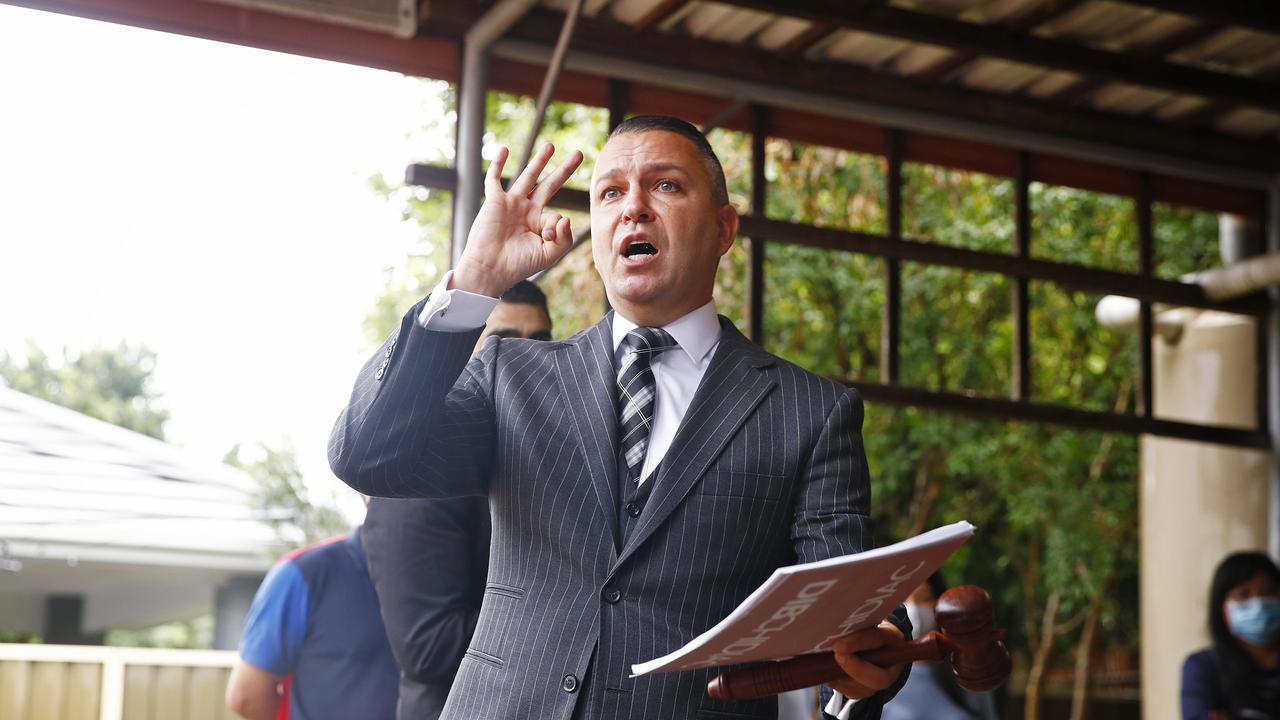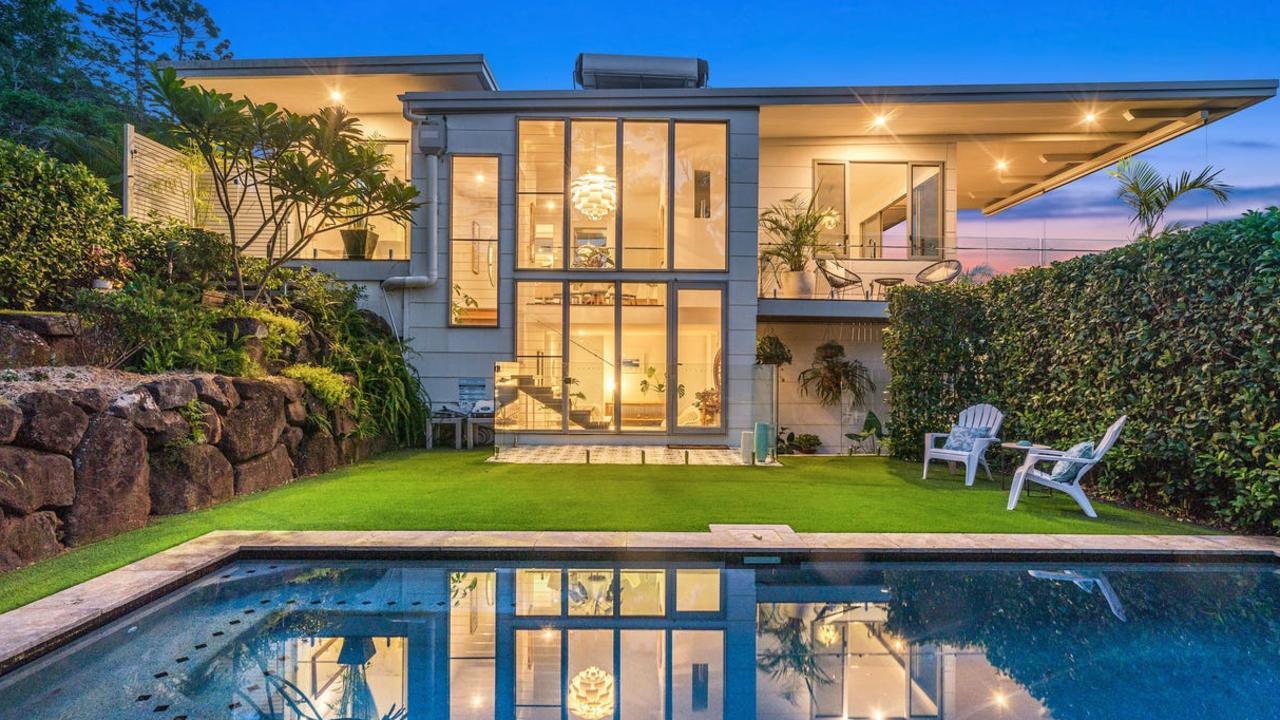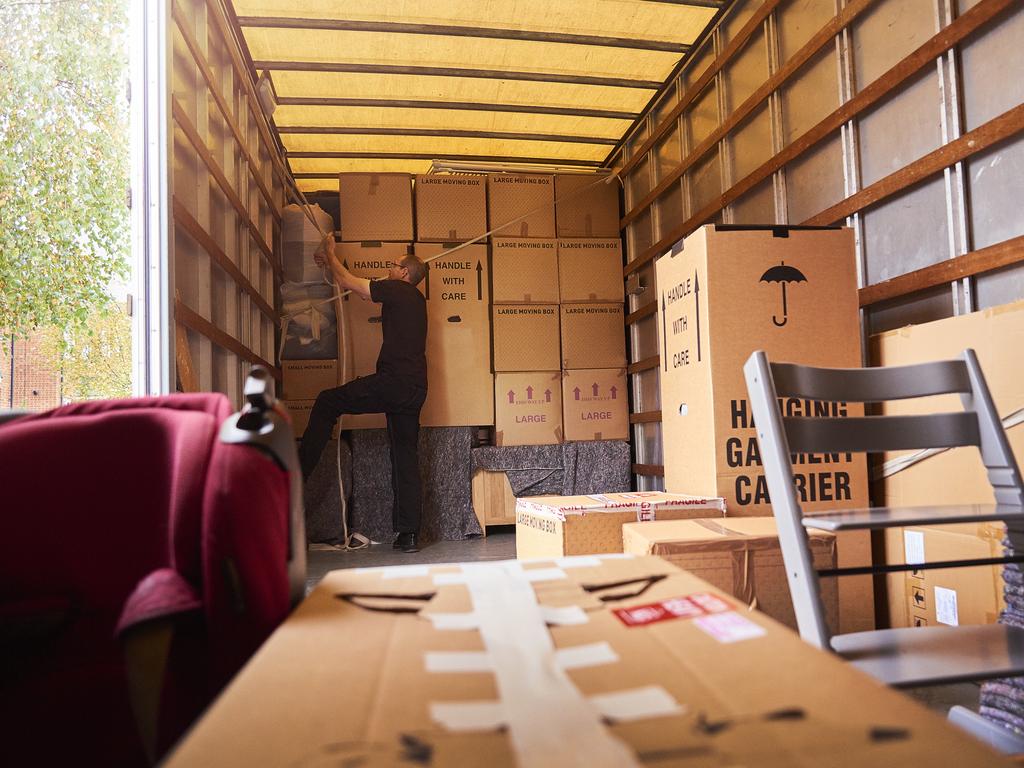After the housing boom, brace for the fall
For more than a million new homeowners there is a belief that house prices always go up in Australia after two years of a supercharged property market.

Business
Don't miss out on the headlines from Business. Followed categories will be added to My News.
More than one million Australian homeowners have never experienced an increase in the official cash rates. And most of these have never seen the price of their house go down.
After two years of a supercharged property market, that’s set to be an uneasy feeling for a new breed of property owners and potentially a damaging time bomb to be handled carefully for whoever wins the May election.
Already dotted around Sydney and Melbourne at the moment are “Under Offer” real estate sign boards not seen since 2017, when the bank regulator last started to cool the pace of mortgage lending, particularly against high-risk interest-only loans.
And the cost of mortgages is going up fast. Commonwealth Bank, the nation’s biggest residential lender, has hiked fixed mortgage rates twice in three weeks. This reflects the surge in pricing for debt across money markets. Other major backs are set to follow in coming weeks.
Potential buyers are already factoring in not just one interest rate rise, but are bracing for the full whack of rate hikes and are starting to adjust their behaviour.
After a once-in-a-generation 22 per cent surge in the property market through the pandemic, homeowners need to prepare for the fall: particularly in the hot Sydney and Melbourne markets.

It’s not going to be a crash by all means but will be a sober reminder that all assets – from property to shares – can’t deliver breakneck growth forever.
From June, the Reserve Bank of Australia will start shifting the cash rate target from a record low of 0.1 per cent, over several meetings, to eventually settle at 1.5 per cent by next year to cool inflation breaking out.
Additional inflationary pressures could push the cash rate higher. Here, there is a worrying signal coming from bond investors, who are betting billions of dollars that interest rates will be 2.1 per cent in two years time and 2.45 per cent in three years.
Across the Tasman, the Reserve Bank of New Zealand is closely watched as setting the tone for Australia’s central bank. On Wednesday, it accelerated its hiking cycle, lifting rates by 50 basis points to tackle surging inflation. Some analysts expect rates there could move to 3 per cent by the end of this year.
Brokerage Macquarie Equities expects Australia housing prices to drift a little further in the near term, but to then decline as the rate rise cycle hits. Macquarie has analysed Australians “capacity to pay” for their mortgage, which points to a fall in the nation’s house prices of around 10 per cent as a base case in 2023.
Others are more bearish. AMP Capital’s chief economist Shane Oliver expects a fall of between 10-15 per cent, from peak to trough, into 2024. This, says Oliver, will take property prices market back to levels of mid-last year.
The RBA’s own calculations on the housing market estimates that, if the cash rate target rose to 2.1 per cent, it would cut housing prices by around 15 per cent, after adjusting for inflation.
Macquarie says the forces pushing the residential property market in recent years have peaked, as rising interest rates cool housing demand.

However, unlike in other down cycles, Macquarie estimates that apartment price falls may be more insulated given limited supply, tight vacancy and relative affordability. Macquarie calculates that average house prices surged through much of the pandemic to be now twice the amount of median unit prices.
While there’s an underlying belief that Australian house prices never go down, there have been several bouts in recent times. Indeed, in the past 15 years, capital city house prices have fallen for five of these.
This includes the outbreak of the Global Financial Crisis (down 8 per cent), the period following the GFC rebound (down 10 per cent) and in the two year period leading-up to the 2019 federal election, which was spurred on by a tightening of lending standards.
The biggest house price fall in modern times was the 25 per cent drop in nominal prices during the 1982 recession. Over the past four decades, every time there was a drop in house price, this was preceded by interest rate rises. The one exception was the 2017 clampdown on lending.
The Covid-19 rebound in property prices is fuelling a consumer boom. The wealth effect of having a house rocket up in prices combined with near record levels of household savings is driving consumer demand. Likewise, it can have a “negative wealth effect” when prices fall.
Cameron Kusher, of REA’s Group’s property forecasting business PropTrack, says bringing forward expectations of the RBA’s hiking cycle will see the property market cool earlier, although prices this year could still exceed 4 per cent.
“We still see a lot of demand out there so it will take a while for it to slow down. But, definitely in the face of interest rate hikes, we are likely to see some price falls next year,” he says.

Kusher, the director of economic research at PropTrack, expects a slower path to interest rate hikes because homeowners adjusting to higher mortgage repayments are going to slow spending in other parts of the economy.
“On a historic basis, interest rates are still very low. It’s just a question of the number of people who have got on board property in the last few years and never experienced a rate hike,” he said.
There is little clarity on how many people have borrowed at or very close to their upper limit while interest rates have been rock bottom low.
“People will tend to get a little nervous if they have borrowed close to their maximum borrowing capacity and interest rates start going up,” Kusher says.
He notes signs of a cooling, including a jump in new listings that is taking the pressure off buyers to rush into a deal. Elsewhere, auction clearance rates are slipping and vendors are increasingly willing to enter into negotiations on prices, particularly before auction.
PropTack’s measure of relative demand, which is demand per listing, is down 13 per cent in Sydney from this time last year. In Melbourne, it is down a little more than 4 per cent on the year.
“Some of the heat has certainly come out of the market. There’s just not as many buyers out there,” Kusher says.
More Coverage
Originally published as After the housing boom, brace for the fall









